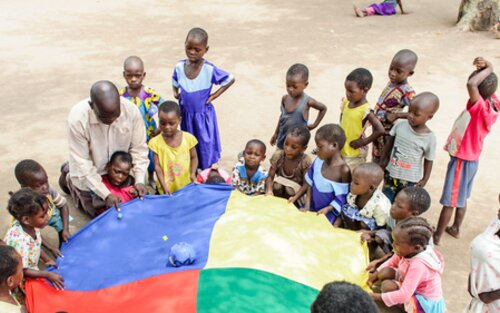Disability and Early Childhood Development
Too often, children with disabilities are left behind from the start…there is need to invest urgently in early interventions for children with disabilities and provide inclusive, quality pre-primary education

Early Childhood Development (JAson J Mulikita)
Too often, children with disabilities are left behind from the start…there is need to invest urgently in early interventions for children with disabilities and provide inclusive, quality pre-primary education.
The Sustainable Development Goals (SDGs) mandate systematic monitoring of the health and wellbeing of all children to achieve optimal early childhood development. However, global epidemiological data on children with developmental disabilities are scarce. The Global Burden of Diseases, Injuries, and Risk Factors Study 2016 provides a comprehensive assessment of prevalence and years lived with disability (YLDs) for development disabilities among children younger than 5 years in 195 countries and territories from 1990 to 2016.
Early childhood, commonly defined as the first 5 years of life, is the fastest period of growth and the period in which the developing brain is most sensitive to stimulation and nurturing. This period of development is regarded as the foundation for subsequent educational and vocational attainment at the individual level, and for overall human capital and economic development at the population level. The UN's Millennium Development Goals (MDGs) focused largely on reducing under-5 mortality, especially in low-income and middle-income countries (LMICs).
By contrast, the UN's Sustainable Development Goals (SDGs) from 2015 to 2030 envision improvements in the broader health status of children beyond survival. Alongside the general recognition of people with disabilities in several of the SDGs, SDG 4 specifically requires actions to monitor the proportion of children younger than 5 years who are achieving their developmental potential in health, education, and psychosocial wellbeing, disaggregated by disability, age, sex, geographic location, and other characteristics.
Developmental disabilities are a group of conditions resulting from impairments that affect a child's physical, learning, or behavioural functioning. Affected children typically have sensory impairments (hearing and vision loss), epilepsy or seizures, cerebral palsy, attention deficit hyperactivity disorder (ADHD), autism spectrum disorder (ASD), intellectual disability, or other learning disorders.
Children with developmental delays and disabilities are at greater risk of suboptimal health, educational attainment, and wellbeing than are children without such disabilities. The absence of any systematic attention to developmental disabilities has had greatest effect in sub-Saharan Africa, where the number of affected children increased by more than 70% between 1990 and 2016, despite an overall decrease in prevalence worldwide during this period.
The SDGs now present a comprehensive framework for addressing the burden of developmental delays and disabilities among survivors of the leading causes of child mortality in the early years of life, especially in LMICs. More crucially, local health and educational systems should be appropriately equipped to support affected children and their families optimally. Although the prevalence of conditions such as ASD and ADHD typically peak at school age or later, some children will require timely intervention from early childhood. Global investment is needed to improve primary data sources for developmental disabilities to minimize uncertainty around the estimates of non-fatal health outcomes in most countries.
Early interventions set the path for the future of every child - but are particularly critical for children with disabilities. Too often, however, they are left behind from the start. Millions of children under five around the world are failed by their governments and international donors, who need to invest urgently in early interventions for children with disabilities and provide inclusive, quality pre-primary education. If they don’t, these children will be condemned to a lifetime of disadvantages.
Governments and donors should significantly scale up their support for children with disabilities in their first five years - including access to early learning and quality pre-primary education. For that to happen, all countries need to produce reliable data that tracks the needs and progress of children with disabilities.
Early identification and interventions on disabilities remains one of the biggest challenges in Kenya. Parents have to go from the villages to the city or major towns to have their young children screened or assessed. The parents of these children have a profile of having a low level of education, many are unemployed - especially mothers who have to look after the children and stay at home. For many parents with children with disabilities there are clearly not enough resources to do their best in difficult circumstances where money and transport is an issue. The parents are not aware of the structures that are out there to help them determine whether their young children have a disability, so very often early interventions are missed.
Mwavuna Kazungu
